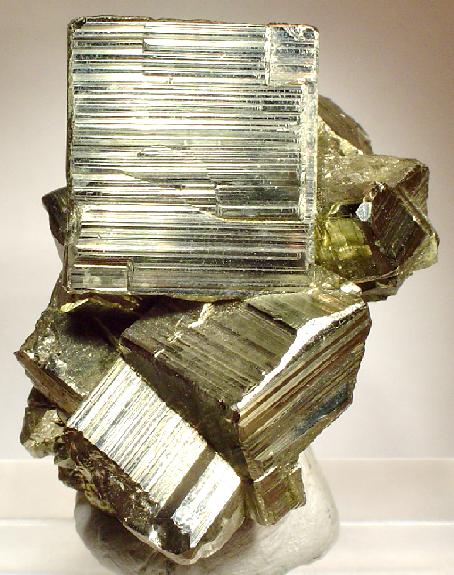
I was in my 30s when I first heard of Devils Dice. What are they?
I was raised in New Jersey. At the age of 33, I moved to Virginia. This short north-to-south emigration exposed me to certain speech, food, and culture changes. It took me a month to get over the accent. During that time, my brain adjusted and the accent sounded totally normal to me! I missed scrapple a lot. Since then, I’m happy to say scrapple successfully has invaded the south.
But there were other changes as well. In the south, there are buzzards. There are red bud trees. There are ABC stores! Even the ground itself offered something new. There is this kind of rock on the surface of the soil nicknamed Devils Dice. It starts out a beautiful brass color, but weathers over time. It turns a dark chocolate brown. What are Devils Dice? Why and how do they change color?
Devils Dice a Modification of Pyrite
Pyrite is an ore of iron, in fact the sulfide of iron. One atom of iron (or ferrum, Fe) combines with two atoms of sulfur (S), to form FeS₂. It can assume cubic, pyritohedra, or octahedral crystalline forms. Devils Dice earned its name because it is the cubic variety of pyrite. Interestingly, during crystallization, the competing of the crystal types can introduce facial lines, facial striation.
Cubic Form
Molecules of iron pyrite connect in such a way that a cube (or a cuboid) easily results. In the schematic layout shown, notice the cube in the lower left quadrant. At the center of that cube are two sulfur atoms. The rest of the layout follows naturally. Iron atoms are seen at each corner and in the center of each face of the cube.
Pyritohedron Form
How is it that pyrite can form a number of crystal shapes that are as different as the cube and the pyritohedron? It is because they are not actually that different. A cube is divided into a pyritohedron by bisecting all its edges and faces in alternate directions.
Octahedral Form
The above explanation of why a pyritohedron doesn’t represent a great departure from the cubic is quite valid. And the same can be said of the octahedron, as any iron atoms are at the corners and/or faces of the cubic crystal lattice. Yet the reason the three different forms (including the very rare octahedral) form has to do with concentration during the time of formation. Nucleation depends upon that concentration, and the manner of nucleation determines the crystal structure formed (see reference, below).
Transformation by Weathering
Many metals tarnish. We might be inclined to think the presence of air is all that is required to produce a tarnish. In fact, the presence of water, and not air alone, greatly hastens tarnishing. Cubes (and other shapes) of pyrite react with these to form a chocolate brown tarnish or coating called limonite. What is the chemistry of limonite?
The chemical formula of Limonite is FeO(OH)·nH₂O. In other words, the oxygen and hydrogen of the air and moisture have replaced the atoms of sulfur in the outer layer. The limonite remains bonded to the pyrite at their interface. It’s rather like a skin has formed over the pyrite.
An overall reaction equation could be written,
4 FeS₂ + 10 H₂O + 15 O₂ → 4 FeO(OH) + 8 H₂SO₄
But where are the n molecules of water that form part of the limonite structure? They can easily be accounted for by including an excess of water on the left side of the chemical reaction.
Practical Pyrite Uses
One might naturally think more in terms of the iron atom in the pyrite molecule, but there are twice as many sulfur atoms, and pyrite was once a predominant starting material for the production of sulfuric acid.
Curiously, the name pyrite suggests another real use. Pyrite, struck against some other hard material, such as metal, can be used to produce the sparking necessary to initiate a fire. This property should be of special interest to the survivalist.
Pyrite is also used, polished, as an ornamental stone.
Note: You might also enjoy The Devils Walking Stick – Aralia Spinosa
References: